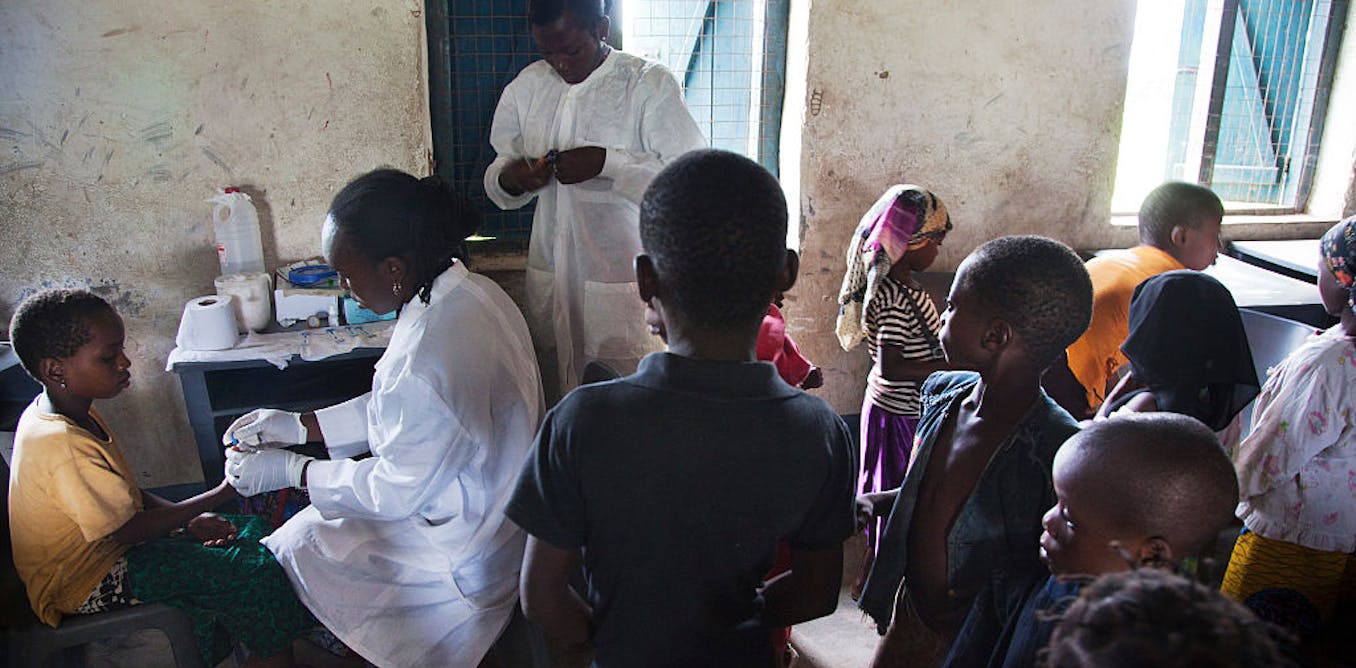YOU might assume that diseases which reigned during the Victorian era would have been wiped out by modern medicine.
But a few have made a worrying resurgence in recent years, one of those being the bone-deforming disease rickets.
1
Think of Charles Dickens’ character Tiny Tim, whose crippled legs may have been caused by the condition, according to modern medics.
Though the disease was common in the past, it mostly disappeared in the western world during the early 20th century after foods like margarine and cereal were fortified with vitamin D.
Now, regions in the UK have reported a startling surge in rickets, with cases in spots such as East Kent increasing sharply over the last five years.
Rickets, once synonymous with poverty and poor diets in Victorian Britain, affects bone development in children, causing bone pain, stunted growth and soft, weak bones that can lead to deformities.
Read more on Victorian disease
A lack of vitamin D – derived from sunlight and some foods – or calcium is the most common cause of the disease, though in rare cases children can be born with a genetic form of rickets.
Left untreated, the condition can also lead to an abnormally curved spine, dental defects and seizures.
East Kent Hospitals University NHS Trust – one of the largest in England – recorded 122 cases in 2019.
But by 2023, that figure had swelled to more than 580 – a 380 per cent increase – according to a Freedom of Information request.
Figures released earlier this year show that 28,379 Brits were diagnosed with rickets between 2019 and 2023.
Poverty and malnutrition could be factors fuelling the rise in scurvy cases in East Kent, as some parts of Thanet are among the poorest in England – more than 20 per cent of its population make up the bottom 10 per cent of most deprived Brits, according to KentOnline.
But the surge in cases might also be down to medics getting better at spotting the Victorian disease.
East Kent’s Chief Medical Officer Des Holden said: “We interpret that part of the increase is due to increased recognition and more accurate recording of rickets.
“Our neo-natal teams are robust in recommending vitamin D for babies at risk, including mothers who have low vitamin D.
“There is also increased awareness in our team to screen for vitamin D levels.
“For example, vitamin D screening is now included in our guidance for children with obesity as this group is at increased risk of vitamin D deficiency.
“Children with rickets may previously have been recorded as having vitamin D deficiency and treated appropriately, but we have improved recording in our coding systems that they meet criteria to diagnose rickets.”
NHS England figures show a sharp increase in hospital admissions for a vitamin D deficiency – from 31,576 admissions in 2013/14 to 188,114 last year – which can lead to the skeletal disorder if left untreated.
Sarah Calcutt, chief executive of City Harvest, a charity which wants to reduce food insecurity, said “There is a whole Dickensian list of diseases that come around because key food groups are missing from people’s diets.”
Vitamin D comes from exposing the skin to sunlight but is also found in foods such as oily fish, eggs and some cereals.
The vitamin is essential for the formation of strong and healthy bones in children.
Any child who doesn’t get enough vitamin D or calcium – either through their diet, or from sunlight – can develop rickets.
But according to the NHS, it’s more common in children with dark skin, as they need more sunlight to get enough vitamin D, as well as children born prematurely or taking medication that interferes with vitamin D.
Previously, experts said the rising cost of living is likely to be behind the surge in rickets and scurvy – another Victorian era disease – as parents struggle to afford fruit and veg and are instead forced to buy cheaper junk food, which lacks vital vitamins and minerals.
PREVENTING RICKETS
Medway GP Dr Julian Spinks says people of all ages should follow the national guidance and take vitamin D supplements to avoid the entirely preventable condition.
“We thought we’d got rid of it. But it is now back,” he told KentOnline.
“There is a possibility if a pregnant woman is very deficient herself that the baby will be born with a relative lack of vitamin D.
“However in most cases it’s because they’re not actually getting enough vitamin D and the two main ways we get it in the UK are from sunlight – particularly from April to September – and from food.
“Definitely diet plays a part. If children are not eating things like oily fish or eggs or for example – breakfast cereals which are often supplemented with vitamin D – then this will have an effect.
“Whilst it’s a very small proportion of the population, it is worrying that this is making a comeback and it’s because it’s a very preventable condition.”
How to protect your child from rickets
YOU can help prevent rickets in your children by ensuring they:
- Eat a healthy, balanced diet rich in vitamin D, with foods like oily fish, red meat, eggs yolks and fortified cereals and spreads
- Spend time in the sun between March and September (wearing sun cream prevents vitamin D absorption from the sun, but you should still apply it before skin starts to burn)
- Take vitamin D supplements
Babies up to a year old need 8.5 to 10 micrograms (mcg) of vitamin D a day, unless they are fed 500ml or more of infant formula a day.
Children from the age of one to four should be given a daily supplement containing 10mcg of vitamin D.
Adults – including pregnant and breastfeeding women – also need 10mcg of vitamin D a day, at least between October and March.
How do I know id my child has rickets
The signs and symptoms of rickets can include:
- Pain – the bones affected by rickets can be sore and painful, so the child may be reluctant to walk or may tire easily; the child’s walk may look different (waddling)
- Skeletal deformities – thickening of the ankles, wrists and knees, bowed legs, soft skull bones and, rarely, bending of the spine
- Dental problems – including weak tooth enamel, delay in teeth coming through and increased risk of cavities
- Poor growth and development – if the skeleton doesn’t grow and develop properly, the child will be shorter than average
- Fragile bones – in severe cases, the bones become weaker and more prone to fractures
Source: NHS
For most children, rickets can be successfully treated by ensuring they eat foods that contain calcium and vitamin D, or by taking vitamin supplements.
Some families are eligible for free vitamin supplements from the government’s Healthy Start scheme.
The scheme can also support cash-strapped households with buying healthy food and milk.
For those who are more than 10 weeks pregnant or have a child under four, and are eligible, a benefit card is topped up every four weeks to help with the purchase of fresh food.
The card can also be used to collect Healthy Start vitamins for pregnant and breastfeeding mums, as well as vitamin drops for babies and young children up to four years old.




